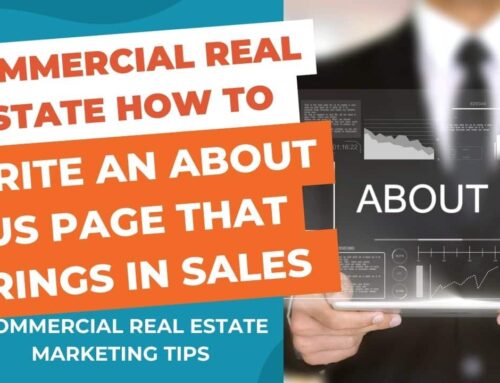A well-designed commercial real estate website for your business is essential to conveying trust in your brand and product. Studies indicate that great design drives a higher willingness to pay through positive user perception, and individuals with a positive perception of the company’s design have roughly 8% to 12% better net retention.
Good website design also affects your search engine optimization and the likelihood of someone discovering your commercial real estate business online. The more organized the information on your commercial property websites are and the more “best practices” they follow, the more it impacts your website’s ranking on search engines.
Here is a breakdown of the key elements of an effective property website that will help capture interest, increase user engagement, and help you generate leads for your properties.
1. Functional Design
More than ever, a commercial real estate website design needs to be functional and concise. User experience is about more than aesthetics. It’s about ensuring quick and easy access to information, minimal gaps in the navigation to find what you need, and clear, easy to read and understand copy. Visitors won’t spend more than 2 minutes on your website, so you need to capture their attention quickly.
There are several factors to consider here, starting with pure functionality:
- Responsive design
- Browser compatibility
- Accessible navigation
Expectations have evolved in the last few years to where people won’t put up with a poor design, frustrating navigation, or inconsistent layouts. If it’s hard to find what they need, they’ll leave to go to another website. Time to Redesign Your Commercial Real Estate Website? 4 Ways to Check.
2. Professional Images
The most straightforward way to advertise properties is with photography. Having a striking selection of professional images on a real-estate listing is fundamental. Your main aim should be bold, high resolution, and attention-grabbing. Don’t trip over the line by using headline images that don’t show off space at its absolute best.
However, remember that large images can slow down webpages. If your image is on the heavy side, reduce its size without reducing quality using free compression tools. Newest Design Trends for Commercial Real Estate Websites.
3. Virtual Tours
Today, tenants and investors who cannot visit a property in person but find images ineffective at fully projecting the nuances of space are looking for virtual tours to fill this gap. 3D virtual tours are becoming more prevalent to help aid during the sell/lease decision making process for commercial properties. The potential for virtual tours as a resource for commercial real estate companies only grew with the increasing adoption of VR technology as well. Key Features of the Best Lead Generating Commercial Real Estate Websites.
4. Excellent Property Descriptions
New technologies, like virtual tours, are promising, but it would be naïve to overlook the impact of the humble property description, which is still what the majority of people examine (alongside images) when deciding whether to enquire or not. However, it’s not necessarily new vs. old. In fact, why not combine great descriptions, and great images, tours, SEO, floor plans, and all the other emerging stuff. You would then have an effective commercial real estate website. How to Market a Commercial Property: The Essential Tools You Need.






